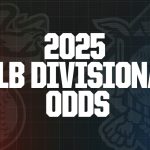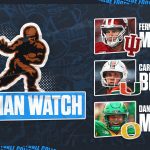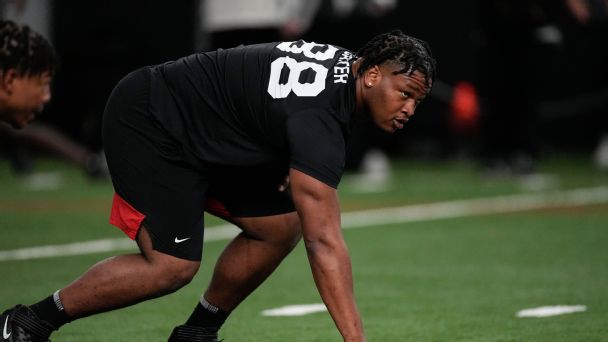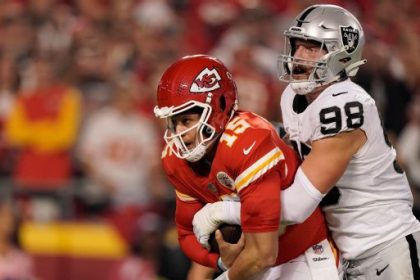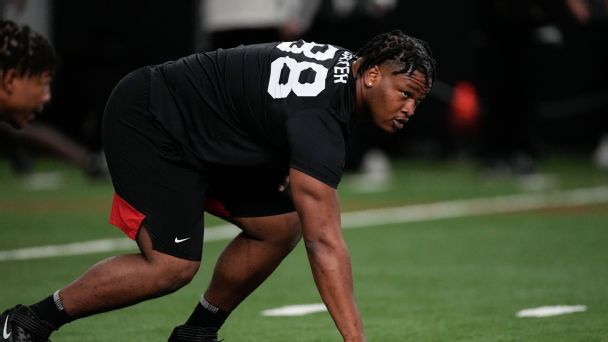
RENTON, Wash. — The further down the first-round order, the harder it typically is for teams and draft analysts to know which players will be available at a given spot. That’s been the reality for the Seattle Seahawks, who have routinely picked in the 20s in 13 drafts under general manager John Schneider and coach Pete Carroll.
So logically, they should have a much better feel than usual for what their options will look like once they’re on the clock at No. 5 overall when the 2023 NFL draft begins Thursday (8 p.m. ET on ESPN, ABC, ESPN App).
“You would think so, right?” Schneider said Wednesday. “It doesn’t feel like it, no.”
While Alabama quarterback Bryce Young is widely expected to be the Carolina Panthers’ choice with the first overall pick, there seems to be growing uncertainty over whether the Houston Texans will pick Ohio State QB C.J. Stroud at No. 2. Georgia tackle Jalen Carter is a wild-card because of his off-the-field concerns, and there’s also the possibility that a quarterback-needy team trades up to No. 3 with the Arizona Cardinals, potentially leaving Carter and/or Alabama linebacker Will Anderson Jr. available to Seattle.
“There’s just a ton of variables up there,” Schneider said. “A lot of different scenarios. A lot of different ways we can go.”
This much is certain: the Seahawks badly need more help up front on defense both in terms of difference-makers and pure volume. And while it’s entirely possible they take a quarterback with the first of their two first-round picks, taking a game-wrecking defender would be the best way to begin filling that void.
With that in mind, here’s a look at what figure to be their top three defensive options at No. 5:
Carter is exactly what the Seahawks have been trying to find for years: An interior defender who can wreak havoc against the run and the pass. It’s why they drafted Malik McDowell in the second round in 2017 even though they had concerns about his effort, why they traded for Sheldon Richardson late that summer after McDowell was seriously injured in an ATV accident, and why they planned to take Dexter Lawrence with their first-rounder in 2019 if only he had lasted a few picks longer.
And it’s why they could take Carter, despite all the questions about his maturity and decision-making. He pleaded no contest in Georiga last month to misdemeanor charges of reckless driving and racing in connection with a fatal crash in January. He was sentenced to 12 months of probation, a $1,000 fine and 80 hours of community service and will attend a state-approved defensive driving course. Then he weighed 323 pounds at his pro day — nine pounds heavier than he was at the combine — and didn’t finish his position drills. According to ESPN draft analyst Todd McShay, Carter’s effort level in practice also left something to be desired.
The Seahawks brought Carter in on a 30 visit two weeks ago, which gave them one-on-one time to evaluate him as a person. The debacle that was the McDowell pick won’t make them feel any easier about Carter — especially since they’d be spending a much more valuable pick — but McShay considers him the most dominant defender in the draft and thinks the reward outweighs the risk.
“He has a unique combination of strength and athleticism,” McShay said. “He dominates every one-on-one that he’s in. I’ve heard people say the motor runs hot and cold. I don’t see it that much. If you’re playing that many snaps in the SEC and the humidity and all that, you might not go 100% on every single play. But my goodness, that guy gives effort on the field, despite all the negative stories about his practice habits.”
Anderson may have the highest floor of the three thanks to his combination of skill, measurables and production. He recorded 34.5 sacks and 62 tackles for loss during his three seasons at Alabama, winning SEC Defensive Player of the Year honors in each of his last two.
At 6-foot-3 ½ and 253 pounds, Anderson has the build the Seahawks look for with outside linebackers in their 3-4 front, and he’s shown the ability to drop into coverage while playing the same position for the Crimson Tide. And while the Seahawks may not have as big of a hole there as they do in the interior of their D-line, they still need someone to start on early downs opposite Uchenna Nwosu, with Darrell Taylor and Boye Mafe seemingly better suited for rotational roles.
The question for Seattle is whether Anderson still be there at No. 5. He’s been widely projected to go to the Cardinals at No. 3. Could the Seahawks move up to that spot to get him? First-round trades between divisional rivals aren’t as uncommon as you might think, but they usually don’t happen in the top 10. And if the Cardinals are looking to move back, they might find a better offer from a team that wants to make a bigger jump up for a quarterback.
Wilson had solid production over the last two seasons after transferring from Texas A&M, posting seven sacks in 2021 and matching that total in 10 games last year before a foot injury ended his season early. But he’s widely projected to be taken inside the top 10 more for his tantalizing length at 6-6 and arms that measure nearly 36 inches long.
Wilson and Carter have been the two defenders most commonly sent to Seattle in ESPN mock drafts, though it’s fair to wonder how well Wilson would fit into their scheme. At 271 pounds, he’s lighter than the defensive ends they played with last season in their move to a 3-4, which raises a question of his ability to anchor against the run on early downs. He’s bigger than their typical outside linebacker and may not be as fluid when dropping into coverage, which they had Nwosu (6-2, 251) do roughly five times per game last season.
Opinions vary on how much all that truly matters. One argument for Seattle taking Wilson despite what may be an imperfect fit is that a good coaching staff should be able to make it work with good players regardless of scheme. Also, NFL defenses spent at least 60% of their snaps in nickel, where edge players are rushing and the OLB/DE distinction no longer matters.




